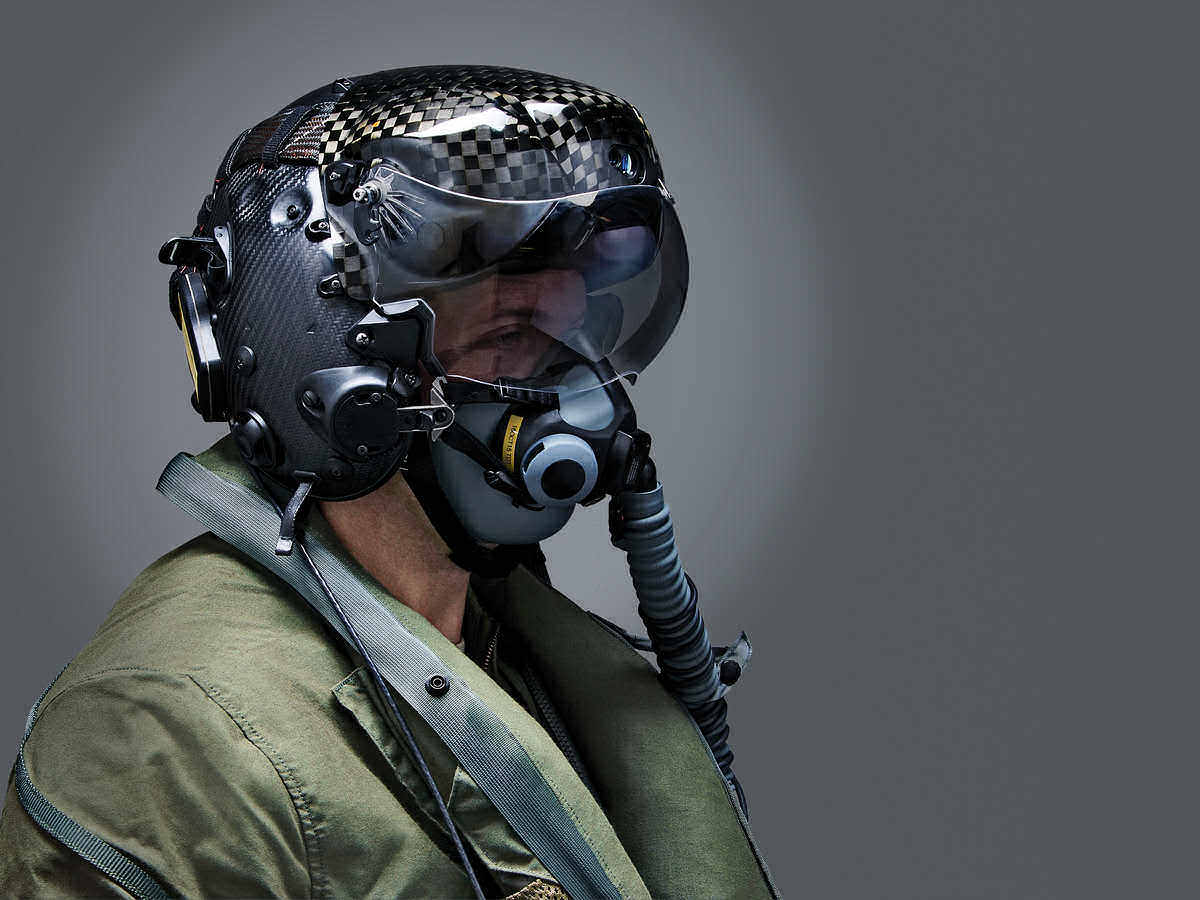The new F-35 fighter jet is so sophisticated, so automated, so connected, it's fueling a debate: do pilots still need to fly?

A DUSTY TARMAC, about 20 miles from downtown Phoenix, Capt. Joseph Stenger stands in 109 degree heat, barely sweating. A 32 year-old fighter pilot with the slicked-back hair, steady eyes, and ropey forearms you see on movie posters, he is admiring an equally impressive piece of flying machinery: the F-35 Lightning II fighter. In his green flight suit, and standing a little over 6 feet tall, Stenger is nearly face to snout with this menacing jet. It’s his job to figure out what it can do in combat, and to teach that to hundreds of other fighter pilots.
The F-35 started arriving here at Luke Air Force Base this past winter. It is the most sophisticated fighter ever built. It is stealth, so it can appear the size of a golf ball to enemy radar, if it’s detected at all. It can also jam enemy radar—or make it seem there are 100 golf-ball-size targets in the sky. It can travel at Mach 1.6. It carries a 25 mm cannon, air-to-air missiles, two 2,000-pound guided bombs, and four external laser guided bombs. But what truly sets it apart is its brain, 8 million lines of software code—more than any fighter in history fusing navigation, communication, and targeting systems.
Stenger explains it like this: In older jets, he has to manually operate things like radar (pointing it at the ground to search for missiles shot at him, or at the sky, to look for enemy planes). He has to monitor a high-speed data link for plane-to-plane communications and texts from ground troops. He or his back-seat weapons guy must pick through data before locking on a target and firing. “You can imagine that’s pretty time consuming and requires a lot of cognitive processing,” Stenger says.
This story is from the January - February 2016 edition of Popular Science.
Start your 7-day Magzter GOLD free trial to access thousands of curated premium stories, and 9,000+ magazines and newspapers.
Already a subscriber ? Sign In
This story is from the January - February 2016 edition of Popular Science.
Start your 7-day Magzter GOLD free trial to access thousands of curated premium stories, and 9,000+ magazines and newspapers.
Already a subscriber? Sign In
They Might Be Giants
A photographer-and-ecologist team are on a mission to document the forests’ mightiest members.
Droplet Stoppers
Covid-19 made face masks a crucial part of every outfit, and we’re likely to don them in the future when we feel ill. Fortunately, there’s a style for every need.
Landing a Lifeline
For those whose livelihood depends on the ocean, a covid-spurred interruption in the seafood market might speed progress toward a more sustainable future—for them and for fish.

Headtrip – Your brain on video chat
Dating, Catching up with family, and going to happy hour are best in person.

Behind The Cover
Butterflies may seem delicate, but they are surprisingly tough.

Tales From the Field – A cold one on mars
Kellie Gerardi, bioastronautics researcher at the International Institute for Austronautical Science
The Needs Of The Few
Designing with the marginalized in mind can improve all of out lives.
Life On The Line
On the Western edge of Borneo, a novel conservation-minded health-care model could provide the world with a blueprint to stop next pandemic before it starts.

waste watchers
YOU CAN TURN FOOD SCRAPS INTO FERTILIZER IN ALMOST ANY CONTAINER. THESE BINS USE THEIR OWN METHODS TO ENCOURAGE THE PROCESS, BUT BOTH KEEP BUGS AND STINK AT BAY.

why can't i forget how to ride a bike?
LEARNING TO PEDAL IS NO EASY FEAT.